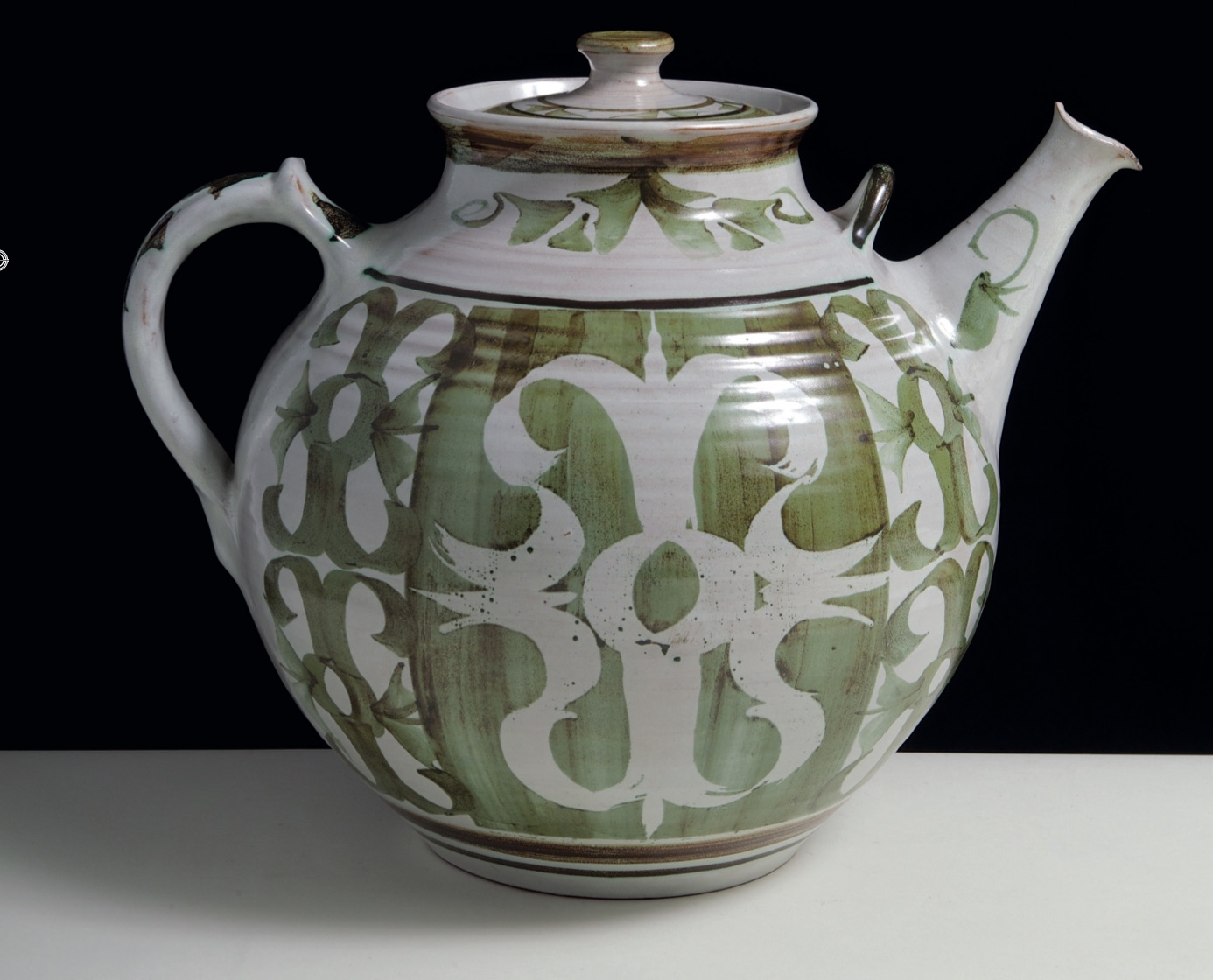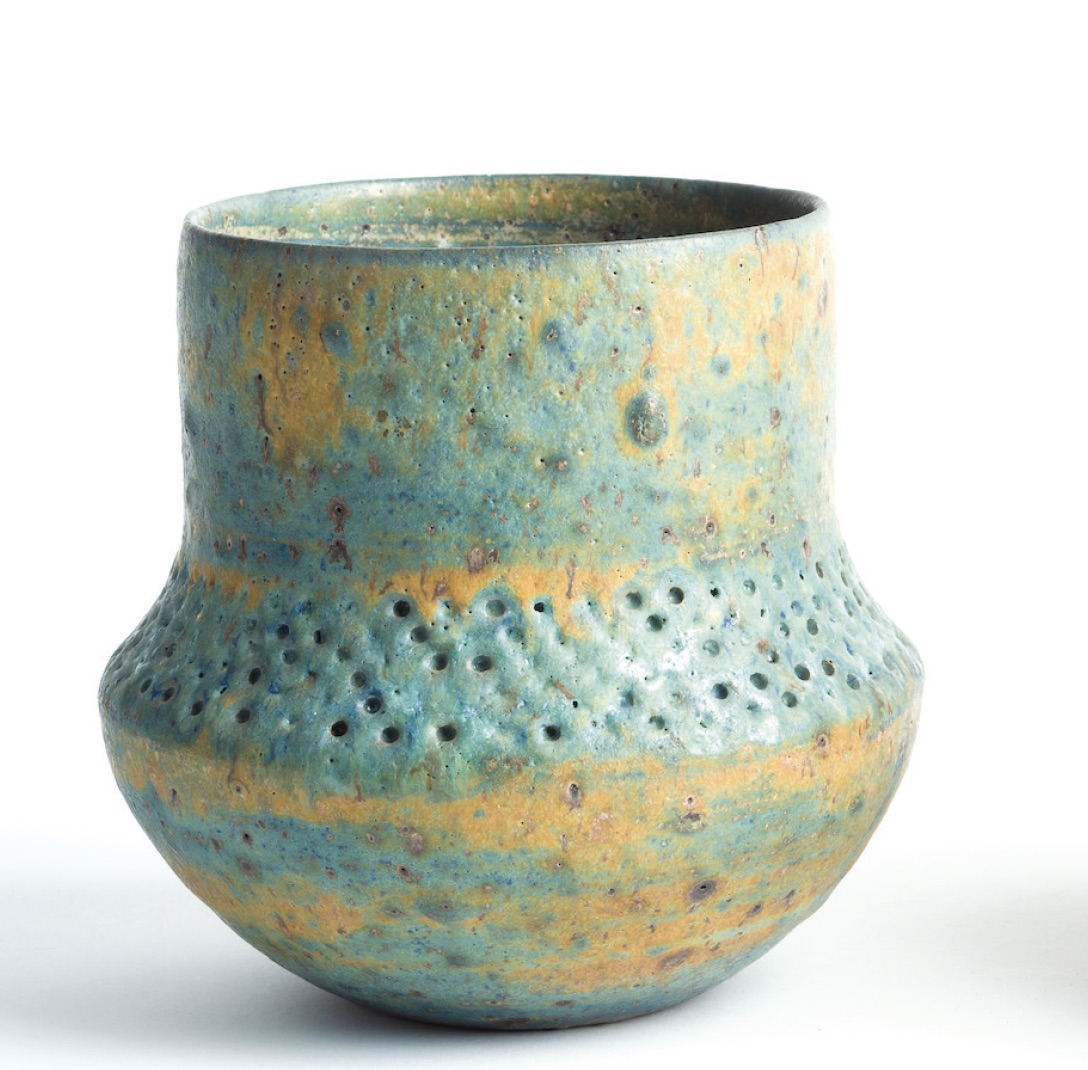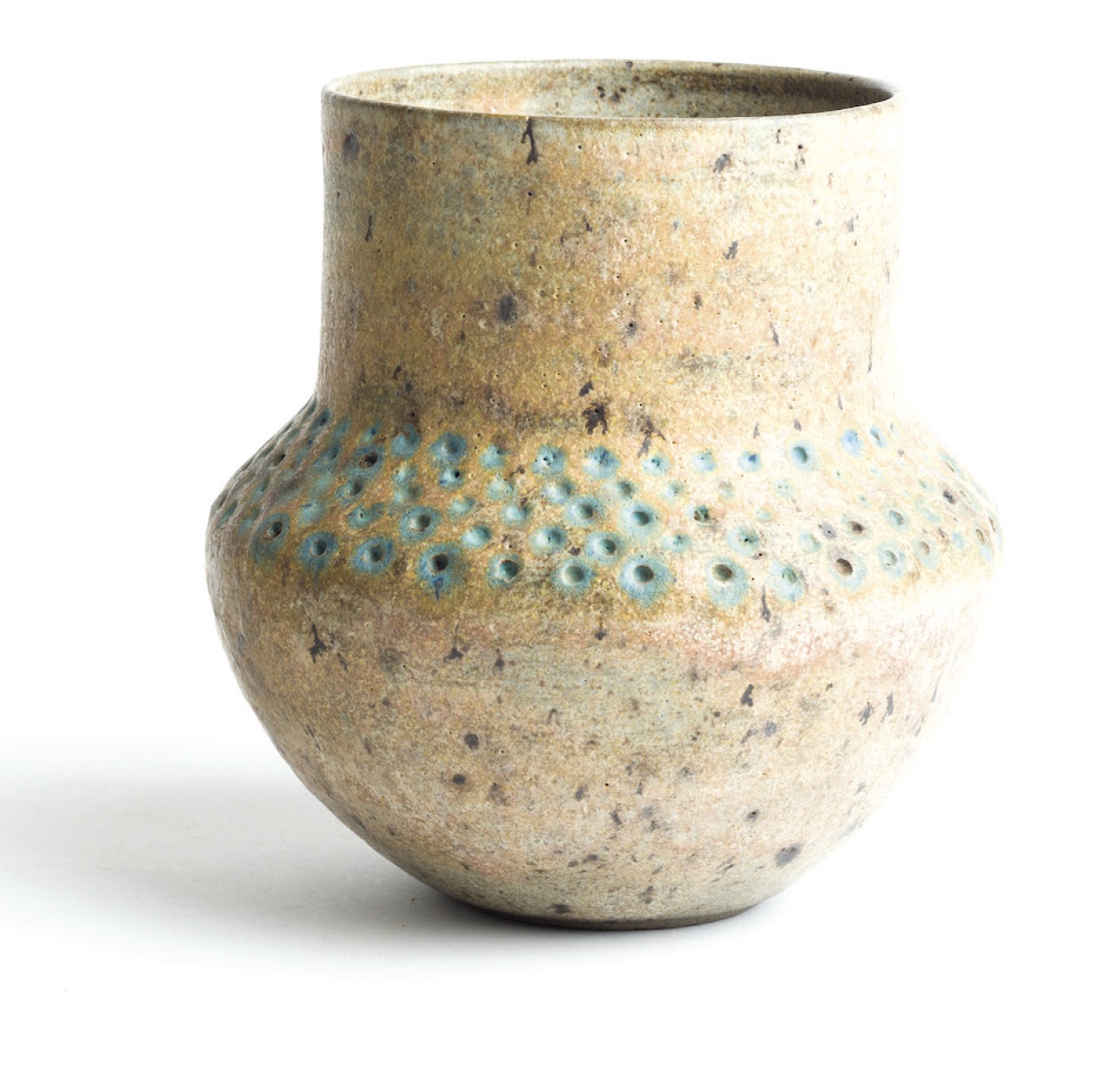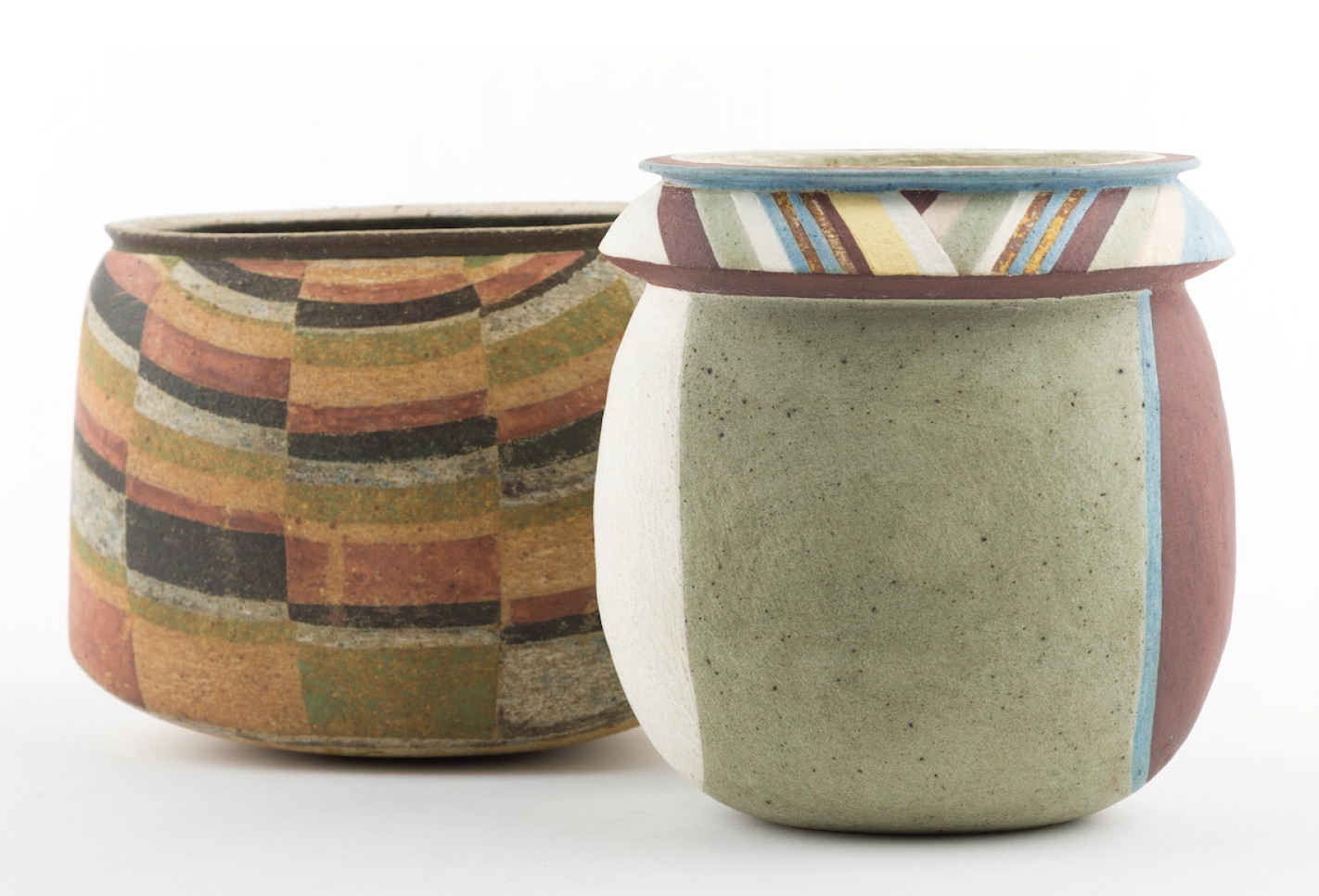WA Ismay – collector of postwar British pottery
 Part of the remarkable collection of W.A. Ismay (1910-2001), the UK’s most prolific collector of postwar British studio pottery, continues on show at York Art Gallery until April 2023. Dr Helen Walsh, ceramics curator at the gallery, shares her insights.
Part of the remarkable collection of W.A. Ismay (1910-2001), the UK’s most prolific collector of postwar British studio pottery, continues on show at York Art Gallery until April 2023. Dr Helen Walsh, ceramics curator at the gallery, shares her insights.
When I joined York Museums Trust in 2004, my first job was to catalogue the W.A. Ismay Collection of British studio pottery. Even when confronted by nearly 500 boxes of carefully packed pots, I rather optimistically thought I’d have it done in six months. It was five years later that I finally catalogued the last of approximately 3,600 pots.

Over those five years, Ismay took me on a fascinating journey through the post-war British studio pottery world. Each box contained a new discovery, a different experience and another artist to get to know.
On his death, Ismay left his entire collection and its associated archive to the city of York and the current exhibition marks 20 years since the collection moved from private to public ownership. The eclectic collection includes objects created by many of the most significant potters working in the UK, such as Lucie Rie, Hans Coper, Bernard Leach and Michael Cardew, as well as work by lesser-known makers.
W. A. Ismay’s collecting obsession
Collecting was a way of life for Ismay; the friendships he developed with potters in his collection took the place of a family. His collecting escalated over the years, often reaching more than 100 pots per year. Towards the end of his life his collection became famous.
The memory of Ismay’s pot-packed house at 14 Welbeck Street in Wakefield, West Yorkshire, remained etched in the minds of those who visited, from curators to students. His friend and fellow collector, Alan Firth, said: “I was just staggered at what I saw. It was mind-blowing, ‘Ismay wrote that beginning his collection of studio pottery helped open up a new social life: “I gradually discovered that my social life, recently diminished by several deaths, could also pleasurably re-expand by knowing personally all or most of the makers of the pots I began to collect”’ and the thing that I remember was that he enjoyed that, he enjoyed blowing my mind, absolutely.” After spending between six and seven hours in Ismay’s house looking at his collection in 1975, the potter, Michael Casson, wrote to Ismay, saying: “All through this time I had a strange feeling (it might have been that I caught a very bad cold after it – but I don’t think so!) It was a feeling of something in the background, something hanging over me. I know it was the presence of ‘vibrations’ of all those pots, coming in one vast lump, at your house. I’ve tried to tell various people about it … but can’t convey the experience.”

Yorkshire born
William Alfred Ismay’s Yorkshire roots were firmly planted and remained a source of great pride to him throughout his life. He was born on 10 April in 1910 in Wakefield, a small city eight miles south of Leeds, and apart from time spent in the army during WWII, he lived in Wakefield and worked in or near to the city all his life.
Ismay’s first experience of buying pots came when he was a small child buying gifts for his mother. He was in many ways a collector looking for his collection, and he found it when he encountered British studio pottery. He wrote: ‘I discovered that present-day ceramics was a field in which relatively low prices made it possible for a person of modest means to make a varied collection.”

Early days
Ismay attended the Queen Elizabeth Grammar School in Wakefield from 1921 to 1929. Despite his intellectual ability his time at school was slightly marred by his poor eyesight. As a pottery collector, one of his most memorable habits was his use of a large magnifying glass, which would be whipped out of his pocket at private views so that he could study exhibits in detail.
His success at school led to the offer of an Oxbridge place, but the expense meant he was unable to take it up. Instead he lived at home and studied Classics at the University of Leeds from 1929 to 1932. After graduating, he joined the West Riding County Library Service as part-time librarian-in charge at Stanley, just three and a half miles north of Wakefield.
His library career was interrupted by the advent of WWII when he served in the Royal Corps of Signals. For all the hardship of serving in the military, the conflict had benefits for Ismay. It gave him the opportunity to travel and brought him into contact with different cultures, allowing him for the first time to witness craft objects being made by hand. He wrote: “I certainly picked up a great deal during the war, in India, by watching village potters at work, and by buying and using as water-coolers a succession of beautifully-thrown unglazed earthenware bottles, majestically shaped and narrow-necked; and by seeing (particularly at Singapore) the kind of inexpensive contemporary vessels which Chinese people used daily and of which I bought examples.”

New hobby
Returning to Wakefield at the end of the war, aged 36, it may have been a comment by his mother – who told him he needed a hobby – that led Ismay to start collecting in earnest.
By the 1950s, Ismay’s remaining family of aunts and cousins had left Wakefield and a number of his friends had passed away. He wrote later that beginning his collection of studio pottery helped open up a new social life: “I gradually discovered that my social life, recently diminished by several deaths, could also pleasurably re-expand by knowing personally all or most of the makers of the pots I began to collect, and by contriving to make acquaintance also of other non-makers who shared my tastes.”
Later, when writing about the reasons people collect, in a 1982 article for Ceramic Review the nevermarried Ismay wrote: “It is perhaps more the unmarried, the married but childless, or those whose family has grown up a little so that they have more time and space to themselves, who are likely to revive (later on) the accumulative instinct and, particularly if their tastes are for arranging and studying objects, to become collectors in the more specialised sense.”
14 Welbeck Street was a space he shared with his family of pots and one in which he entertained the many people who visited his collection.
Initially, Ismay stuck to his selfimposed restriction of collecting pieces only by Yorkshire makers, purchasing the work of only three potters during 1955. There were nine pieces by Barbara Cass, seven pieces by Joan Hotchin and two pieces by Irwin Hoyland. His modest initial purchases in 1955 were overshadowed the following year when he collected 65 pots. The scope of his collecting obsession soon grew much further.

Meticulous archive
Most of his collection focused on functional pots, however he also bought more sculptural works by some of the important makers, including Gordon Baldwin, Glenys Barton and Elizabeth Fritsch. Ismay took great pleasure in spotting new talent, particularly at college degree shows.
When he discovered a maker whose work he admired, he would stay loyal to them and support them through the years. He also made meticulous notes of his purchases in records which reflect what was happening in his life. After settling his mother’s estate after she died in 1956, Ismay found some respite by widening his search for studio pottery beyond Yorkshire.
During an early trip to London, Ismay visited the Crafts Centre of Great Britain on Hay Hill, where he bought one piece each by Katharine Pleydell Bouverie and David Leach. On another London trip later that year, he bought 11 pieces by Bernard Leach, five by Hans Coper and six by Lucie Rie. Thanks to his inheritance, Ismay was able to raise his collecting ambitions and purchase work from London exhibitions and galleries, spending significant amounts of money on new pots. He spent between 7s 9d and £6 on pots by Bernard Leach, between £3 and £15 on pieces by Hans Coper, and between £2 and £12 on pieces by Lucie Rie.

Retirement fund
In 1975, he acquired 177 items, more pots than in any other year by a large margin. This was the year that he retired and so had his retirement lump sum to spend, along with the time to travel to potters and exhibitions: “I found I’d bought 177 pots last year which is a record and quite ridiculous! Having scrutinised my bank balance and the future modest rate of replenishment I realise I must retrench – but I seem automatically to acquire around the basic ‘pot a week’ and have notched up 9 for 1976 so far.”
Over the years he had noticed that he had a habit of purchasing at least 53 pots per year, or a pot a week. This became a benchmark for him, a sign that the collection was healthy and growing.

Favourite potters
In Ismay’s list of potters there were 19 who broke the 30-pot threshold. The Yorkshire potter Jim Malone (b. 1946) topped Ismay’s list with 80 of his works in his collection; the ceramicist Eric James Mellon (1925-2014) was second with Ismay amassing 68 of his pieces. He had 57 pots by Michael Cardew, 36 by Bernard Leach and 30 produced by Hans Coper, the numbers perhaps reflecting the soaring prices of some of the artists as much as his preferred aesthetic. Despite being publicly noncommittal on the subject of favourites, Ismay did once let slip in a letter to Cardew that his grain jar made by Cardew was his ‘top pot’.

Magdalene Odundo
Ismay met the potter Magdalene Odundo in 1976 when she was a student at the West Surrey College of Art & Design. It was on the occasion of her undergaduate degree show and she was showing the coiled pots she had made, which were heavily influenced by the traditional pots of her African birthplace.
Ismay purchased three such pots from her between 1976 and 1978, which he felt sat comfortably next to a number of pots by African potters in his collection. When she began producing the fine burnished vessels for which she is now known, Ismay was fascinated. One piece he purchased in 1982 was a red and black burnished vase with an off-set neck. Bought at her Royal College of Art show, it cost £140; he paid a deposit of £70 on the day then sent her cheques later covering further instalments. In her letter of reply to his first cheque, Odundo wrote: “Please don’t worry yourself as to when you should send the check and so forth. I can wait for the next installment until you are able to pay it. Don’t deprive yourself of buying other pieces because you feel my check is urgent … It is a great honour for my work to find a place amidst your splendid collection and I am more proud of that than anything else. I have seen the collection and thus know that I am honoured.”
His final purchase of her work was made in 1984 from the exhibition Individual Eye at the Craftsmen Potters Shop in London. It had a retail price of £400 and even with a very generous 40 per cent discount, which reduced the cost to £260, Ismay had to stretch his finances to afford it.
This experience highlights how rapid rises in the prices of pots during the 1980s affected Ismay’s ability to collect. The market developed from the late 1960s onwards as the number of people collecting British studio pottery rose.

Auction target
The monetary value of his collection was never a priority for him and he certainly never purchased items thinking of them as a financial investment, since he had no intention of selling them.
However, although the financial value of his collection was of little importance compared with the pleasure his pots gave him, Ismay was not unaware of the commercial side of the British studio pottery movement. Ismay was seen as both a customer and a potential seller and was usually sent catalogues by auction houses with a studio pottery sale coming up. He was generally uninterested in purchasing through auctions, as direct contact with potters and passionate gallery owners was something he valued.
In 1983, Ismay spotted a large Hans Coper pot, which was almost identical to one he bought for £10 from the Midland Group of Artists exhibition Seven Artist-Craftsmen in 1959, which sold at Sotheby’s for £9,500.

Lasting legacy
Once the word got out that Ismay was looking for a permanent collection, expressions of interest began to surface. It was not only public museums that were approaching Ismay now, but private collectors and auction houses, too. Institutions that wanted to cherrypick the best bits of the collection and discard the rest were easily dismissed. One collector from Germany approached Ismay with the suggestion that 14 Welbeck Street be made into a public museum, capitalizing on the unique nature of the domestic interior that Ismay had created. He proposed that items from the collection be sold to finance it. Ismay’s reply was a firm ‘no’.
After reaching the decision to leave his beloved pots to the city of York, Ismay began the process of putting together a catalogue of his collection in 1996. The W.A. Ismay Collection was bequeathed to the Yorkshire Museum in 2001. Comprising of more than 3,600 pots by around 500 potters, it is almost certainly the largest and most important collection of its type in the UK.
Taken from The Yorkshire Tea Ceremony, the first major book on the W.A. Ismay Collection, by Dr Helen Walsh and published by the Centre of Ceramic Art and Paul Holberton Publishing. The exhibition of the same name is on at York Art Gallery’s Centre of Ceramic Art until April 2023, for more details go to www.yorkartgallery.org.uk


